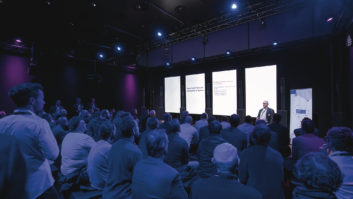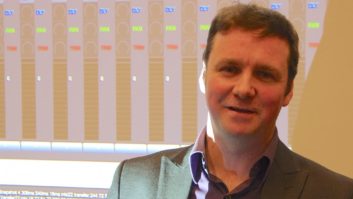
As the pro AV industry becomes an increasingly network-centric one, attention inevitably turns to the standards that might underpin the networks of the future. Ian McMurray assesses the state of play with AVB/TSN – and asks if the technology can improve its trailing market position
The AVB – audio-video bridging – task group was formed in 2006, with the goal of replacing both the physical complexity of analogue cables and the network complexity of earlier proprietary solutions with an open, standards-based approach that would enable interoperable platforms to offer more affordable and better market solutions. The Avnu Alliance was launched in 2009 to create certification processes based on AVB standards that would ensure interoperability.
From the outset, there was a belief that the principles of AVB could be applied not only to professional and consumer audio and video networks, but also in areas such as automotive and industrial. Eventually, this saw the AVB task group become the TSN – time-sensitive networking – task group, and Avnu’s remit now extends to TSN solutions.
“TSN is the evolution of AVB, building upon the AVB specifications to expand the range, functionality and applications of the standard,” explains Patrick Prothe, Avnu Alliance pro AV segment chair. “TSN is intended to be backwards-compatible with AVB, but also includes new features and enhancements – some meant to enable Internet of Things (IoT) connections. Some of the new key features in TSN also include added fault tolerance and redundancy.”
Multiple traffic types
“AVB/TSN takes a completely different approach than the proprietary technology on the market by enabling multiple traffic types to flow on a shared deterministic network,” he continues. “That’s a tall order and it’s something that no other protocol or technology can do.”
Determinism is becoming increasingly important in networking. As the name implies, it means that the time it will take for a data packet to reach its destination is both predictable and repeatable, differentiating it from ‘best effort’ traffic, from which it is partitioned. This makes it ideal for real-time applications and for applications where the amount of latency needs to be guaranteed.
There’s much, then, about AVB that is unquestionably promising. The reality, however, is that it is Audinate’s Dante that has captured the lion’s share of attention – and adoption – in recent years.
Roland Hemming, principal of RH Consulting, has carried out detailed quantitative research into projects in the networked audio market – most recently last summer. Noting that his research found more than seven times as many Dante projects as AVB, he observes: “Almost all AVB use is either Biamp or Meyer systems with no interconnection to other devices other than same brand product. They are effectively proprietary projects.”
Can AVB come from a trailing position and fulfil its potential? Its proponents are clear that that’s what’s happening.
“Major players in the industry – such as Avid, Biamp, Cisco, d&b, Intel, L-Acoustics and Meyer Sound and many more – have committed to work together within the Avnu Alliance,” says Prothe.
“The adoption of AVB/TSN continues to increase as more integrators, consultants, and end users gain greater understanding of the flexibility and superior networking capabilities an AVB/TSN network topology provides,” claims Shell Haffner, director of product management at Biamp Systems.
“As evidence,” he adds, “the Avnu test facility has been busy with a multitude of switch manufacturers – a sign that the network equipment providers are implementing AVB/TSN for deployment. That, in turn, should lead to more network endpoint manufacturers submitting their products for testing and certification.”
“There’s been quite a bit going on lately,” echoes John McMahon, vice president of solutions and strategy at Meyer Sound. “We’ve seen recent public demonstrations of switches from Cisco with AVB/TSN capability. Also, another major manufacturer of professional loudspeaker systems has introduced Avnu-certified AVB products, which means that now a large portion of the high-end loudspeaker market is committed to AVB as a primary networking platform.”
Here’s part two, which looks at AVB’s connection with the wider IT world
www.avnu.org
www.biamp.com
www.meyersound.com
www.rhconsulting.eu






